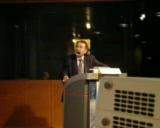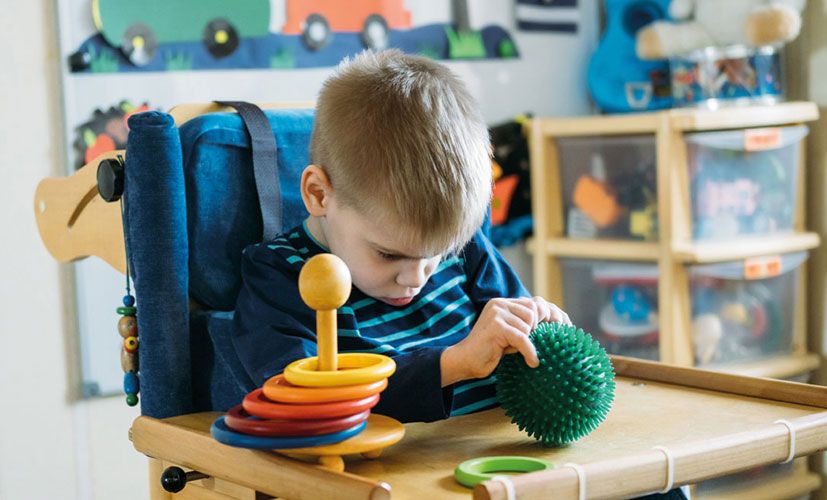Electrical brain activity following magnetic stimulation as recorded with high-resolution QEEG
Presented in the 8th World Congress of Psychiatry in Vienna in July 2th, 2005.
(A symposium called ‘Brain Stimulation Techniques in Psychiatry and Electrophysiology’. Chair: Bilgen Taneli, Co-chair: Mark George, Other speakers: David Avery, Nevzat Tarhan). Published in The World Journal of Biological Psychiatry, Volume 5-3 (Supplement 1), 2005-July. Electrical brain activity following magnetic stimulation as recorded with high-resolution QEEG Prof. Dr. Nevzat Tarhan rTMS
- First TMS capable of delivering a pulse every three seconds (as diagnostic aids for neurologists.)
- New machines which can give up to 50 stimuli per second (rTMS)
- A non-invasive technique, free of serious side effects, easily modifying activity of specific brain areas
How does rTMS work for brain electrical activity?
- rTMS gives short pulses of magnetic energy to Limbic system structures
- Small electric charges can cause the neurons to fire or to become active
Ilmoniemi et.al.(1997) were able to measure with QEEG just seconds after electromagnetic pulse
- Nashaat et.al (2001),
- Nikulin et.al (2003),
- Kommsi et.al (2004) have used ongoing rTMS and QEEG Monitoring
Brain electrical activity changes with rTMS
- lAcute rTMS induces changes in regional activity throughout the brain
- Stimulation intensity is important
- Low frequency has a tendency to decrease
- High frequency has a tendency to increase
Resynchronization effects
- lNormal brain function requires synchronized activity of interconnected brain areas
- rTMS may help ‘reset’ the normal synchrony between brain regions (Garcia-Toro et.al. 2001, Avery 2004)
 GABA and QEEG
GABA and QEEG
-
- lGABA increases functional connectivity on QEEG (Benzodiazepine effect)
- GABA decreases with stress
- GABA decreases in plasma and in brain (MRS) of depressed patients
- ECT increases GABA level in depressed patients.
- rTMS: increase ?
State marker improves after treatment
- Trait marker doesn’t improve after treatment
‘State markers’ of QEEG being:
- lRatio of Alpha waves
- Ratio of Delta waves
- Hemispheric asymmetry
- Alpha/Delta ratio of the frontal area
Acute drug effect in QEEG
- lTricyclic Antidepressant drugs: Alpha, Theta, Delta
- Antipsychotic drugs :Theta and Delta waves
- Antianxiety drugs :beta
- Cognitive activator drugs : Alpha
- SSRI drugs: Alpha (Itil 1989)
The Response to drug treatment in depression
- •Delta waves: good response,
- Alpha and Beta waves: good response,
- Unchanged QEEG: bad response. (Kendler)
The Distribution of Brain waves in QEEG after 10 sessions of rTMS (preliminary findings)
 According to HAM Scores
According to HAM ScoresHAM Scores and QEEG after 10 sessions of rTMS “An interpretation”
- lAll patients showed 30-50% treatment response
- In Alpha increases group, HAM improvement was greater
- In no changes group, HAM improvement was minimal
- More verification, and MEG studies, are necessary
Pregnancy and rTMS (Case Study I)
- lOne case (I.D., 32 years)
- She had serious non-psychotic Chronic Major Depression.
- She used antiepileptic and antidepressant drugs.
- She became pregnant during treatment.
- She wanted to continue the pregnancy.
Pregnancy and rTMS (Case Study II)
- lFirstly, we stopped her using the antidepressant drugs
- We applied 40 sessions of rTMS to her.
- Every session was 25 Hz. and 1000 pulses.
- Now, she has a healthy baby.
- After birth, rTMS was continued.
Frequency of seizures
- lWe applied rTMS at approximately 15,000 sessions in two years
- In every session, rTMS was applied at 25 Hz
- In most cases, 1000 pulses were applied in every session
- Grandmal seizures were observed only in 3 cases.(3 /15,000)
- 25 Hz, 1 Pulses, 50% Power
- 25 Hz, 1 Pulses, 100% Power
- 25 Hz, 3 Pulses, 100% Power
- 5 Hz, 10 Pulses, 50% Power, Duration 1.8 sec
- 5 Hz, 10 Pulses, 75% Power, Duration 1.8 sec
- 5 Hz, 10 Pulses, 100% Power, Duration 1.8 sec
- 25 Hz, 50 Pulses, 50% Power, Duration 1.9 sec
- 25 Hz, 50 Pulses, 75% Power, Duration 1.9 sec
- 25 Hz, 50 Pulses, 100% Power, Duration 1.9 sec
Scientific Inspiration
- One day, in 1990 at a London Hospital in an elevator, a passenger was giggling. A magnetic stimulation had been applied to his head. It was a neuro-diagnostic motor test, for thumb jerk
- Dr. Mark George observed and was astonished by this situation. He suspected that magnetic fields could move much more than the thumb.
- The story of magnetic therapy in psychiatry started like this.


 GABA and QEEG
GABA and QEEG
 According to HAM ScoresHAM Scores and QEEG after 10 sessions of rTMS “An interpretation”
According to HAM ScoresHAM Scores and QEEG after 10 sessions of rTMS “An interpretation”